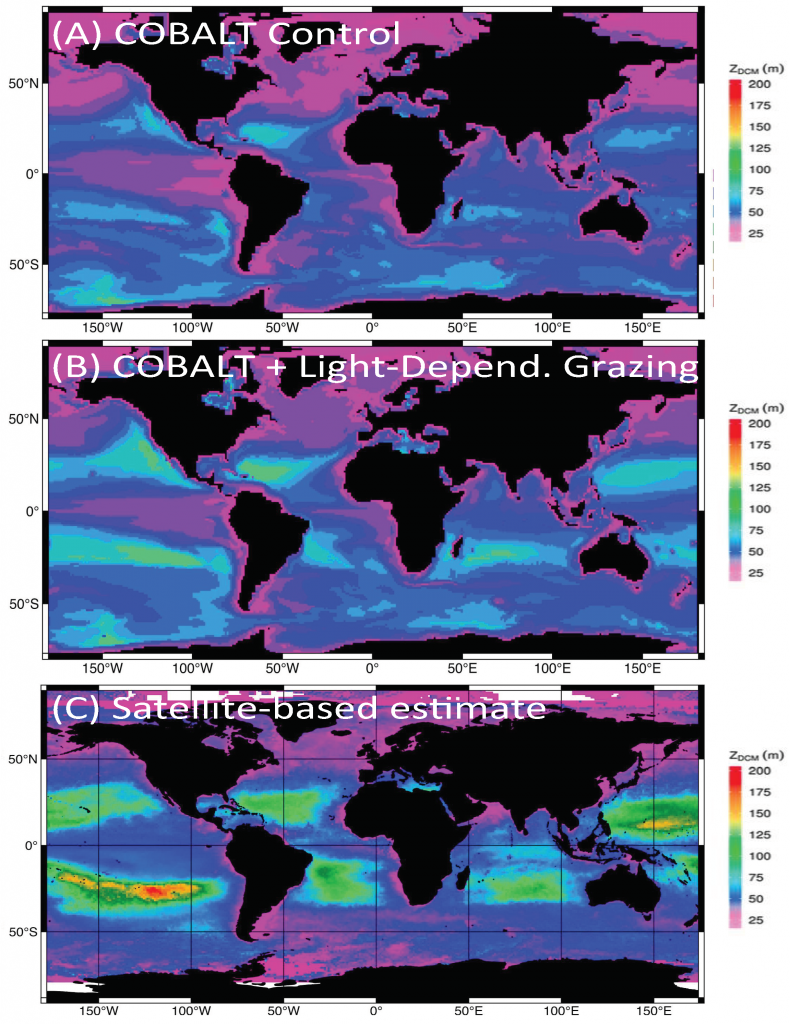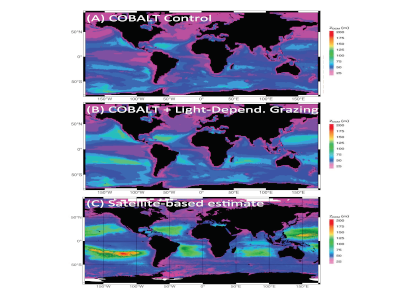Photosynthetic, single-celled phytoplankton form the base of many marine and lacustrine (lake) food webs. These microscopic algae typically occur in the sunlit surface layer, but in many ecosystems, there are also sub-surface peaks in phytoplankton and chlorophyll-a, their key photosynthetic pigment. Historically, scientists have explained deep chlorophyll maximum (DCM) formation by invoking “bottom-up” processes such as nutrient and light co-limitation, while less attention has been paid to “top-down” controls such as predation.
A recent study in Nature Communications challenges this conventional wisdom by arguing that microzooplankton (top-down control) can cause the formation of DCMs by preferentially consuming phytoplankton near the surface. This can occur when microzooplankton exhibit light-dependent grazing—a known but not well-understood phenomenon in which prey consumption rates increase with increasing light intensity. By incorporating this phenomenon into mathematical models, the authors showed that this can create a “spatial refuge” for phytoplankton in deeper, darker parts of the water column, where there is enough sunlight to photosynthesize, but too little for efficient microzooplankton predation. Furthermore, when light-dependent grazing is incorporated into a global ocean biogeochemistry model (COBALT: Carbon, Ocean Biogeochemistry and Lower Trophics – planktonic ecosystem model), DCMs that are already present due to bottom-up controls deepen, improving agreement between model predictions, satellite data, and in situ observations.

Figure legend: Global comparison of annual mean deep chlorophyll maxima (DCM) depths (A) predicted by the unmodified COBALT model, (B) predicted by the COBALT model modified to include light-dependent microzooplankton grazing, and (C) estimated based on satellite data. Incorporating light-dependent grazing deepens the DCM, especially in oligotrophic gyres, and improves agreement with observational data.
These findings highlight the importance of higher trophic levels in regulating aquatic primary productivity. The model predictions suggest that not only can microzooplankton suppress primary production near the surface, but by shifting phytoplankton abundances deeper, they may increase carbon export via the biological pump. Future field tests of this hypothesis—i.e. detailed grazing measurements in stratified water columns with DCMs—can elucidate the extent to which light-dependent grazing shapes phytoplankton distribution in real biological systems.
Authors:
Holly Moeller (University of California Santa Barbara)
Charlotte Laufkötter (University of Bern and Princeton University)
Edward Sweeney (Sea Education Association and Santa Barbara Museum of Natural History)
Matthew Johnson (Woods Hole Oceanographic Institution)




